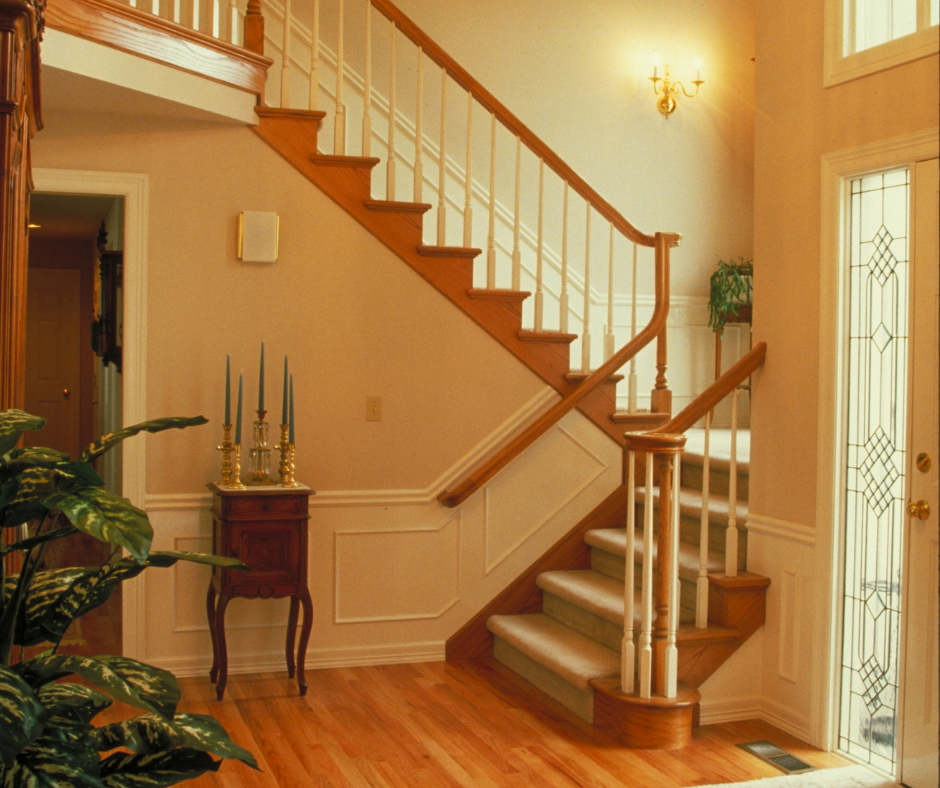Ever worried that one misstep on your stairs could lead to a painful fall? Interior stair tread depth refers to how deep each step measures from front to back, and the ideal range for most homes is 10 to 11 inches to create a stable, comfortable surface. In this guide, you’ll discover how proper measurements, material choices, and carpet stair treads work together to make every step safer and more beautiful.
Learning the right depth standards will help you avoid trips, meet building codes, and protect your family. You’ll also see why carpet stair treads can enhance grip and comfort without compromising the correct depth. Keep reading to gain clear, actionable tips for designing stairs that feel secure, stylish, and built to last.
What Is the Standard Stair Tread Depth?
Interior stair tread depth simply means how deep each step is from front to back.
Most building codes recommend a depth between 10 and 11 inches, which gives you plenty of space to place your foot safely without feeling crowded.
This standard fits most homes and helps prevent accidents by offering a consistent, comfortable landing spot for each step.
Why Tread Depth Matters for Safety and Comfort
When your stairs aren’t the right depth, you may notice:
-
Trips and slips from shallow treads
-
Uneven wear on certain parts of the step
-
Discomfort when climbing or descending
-
Safety concerns for children and pets
Think of a toddler learning to walk or a dog bounding down to greet you—consistent, sturdy steps help keep everyone safe.
That’s why stair depth isn’t just about following rules—it’s about protecting the people and moments that matter.
What Is a Good Size for Interior Stair Treads?
For most homes, a tread depth of 10 to 11 inches is ideal.
This size provides enough surface area for your foot to land securely, which helps you maintain balance and reduces the chance of falls.
If you’re planning to add carpet stair treads, be sure to account for the extra thickness they bring.
Commercial Stair Tread Depth and Width
In commercial spaces—like offices, shops, or public buildings—the rules are a bit stricter.
According to the International Building Code, commercial stair treads should:
-
Be at least 11 inches deep
-
Have risers no higher than 7 inches
-
Be at least 44 inches wide to allow safe passage for multiple people
These standards make sure high-traffic areas remain accessible and safe for everyone.
How Thick Should Interior Stair Treads Be?
Depth isn’t the only measurement that matters. You also need to think about thickness.
Most residential stair treads should be at least 1 inch thick. For extra durability, especially in commercial settings or with certain materials, you may need treads up to 1.5 inches thick.
Here are some general guidelines:
-
Wood treads: 1–1.5 inches thick
-
Concrete treads: Often thicker for added strength
-
Engineered materials: Follow manufacturer recommendations
Always check your local building codes to confirm what’s required.
How Do Carpet Stair Treads Affect Depth?
Adding carpet stair treads doesn’t actually change the structural depth, but it can change how the step feels.
Here’s why:
-
A thicker carpet creates a slightly higher nosing (the front edge).
-
The soft texture can feel like you have more depth underfoot.
-
If your carpet is ½ inch thick or more, you may prefer slightly deeper treads to keep steps feeling balanced.
Plus, carpet stair treads bring extra benefits:
-
More grip for little feet and paws
-
A softer landing
-
Protection against scuffs and wear
Adjusting for Carpet Thickness
When planning your stairs, measure the combined depth of the tread plus carpet.
For example, if you have an 11-inch wood tread and add a ½ inch carpet, you’ll effectively create 11.5 inches of usable depth.
This extra space can improve comfort and safety, especially on steep staircases.
Additional Considerations for Stair Design
-
Riser Height: This is the vertical piece between each step. Standard height is 7 to 8 inches, which helps avoid awkward climbing angles.
-
Staircase Width: For homes, a width of 36 inches is typical and comfortable. Commercial stairs must be wider to meet accessibility rules.
-
Uniformity: Make sure every tread and riser is exactly the same size. Even slight differences can create tripping hazards.
Measuring Stair Tread Depth
When you measure, be sure to:
-
Measure from the nosing (front edge) to the back of the tread.
-
Double-check all measurements with a level.
-
Consider the impact of any coverings like carpet or runners.
Pro Tip: Always measure twice—especially if you’re ordering custom stair treads from Oak Valley Designs.
Common Mistakes to Avoid
Many homeowners unintentionally make mistakes like:
-
Choosing treads that are too shallow for adult foot size
-
Forgetting to account for carpet thickness
-
Using inconsistent measurements
-
Ignoring local building codes
Avoid these pitfalls by planning ahead and consulting a professional if you’re unsure.
Steps To Success
Getting the right interior stair tread depth isn’t just about ticking boxes—it’s about creating a home that feels safe, welcoming, and truly yours.
From choosing materials to measuring accurately, a little planning goes a long way. Ready to design stairs that fit your family’s lifestyle? Oak Valley Designs is here to help you every step of the way.
Stepping It Up
Ready to make sure every step in your home feels safe, comfortable, and beautifully designed? From measuring the right interior stair tread depth to choosing the perfect carpet treads, Oak Valley Designs has everything you need to create stairs your family will love.
Explore our made-in-the-USA stair treads or request a sample swatch today—we’re here to help every step of the way.
-
Website: https://oakvalleydesigns.com/
-
Phone: (706) 331-0315
-
Email: info@oakvalleydesigns.com
-
Address: 30 River Ct SW Bldg E Cartersville, Ga 30120



